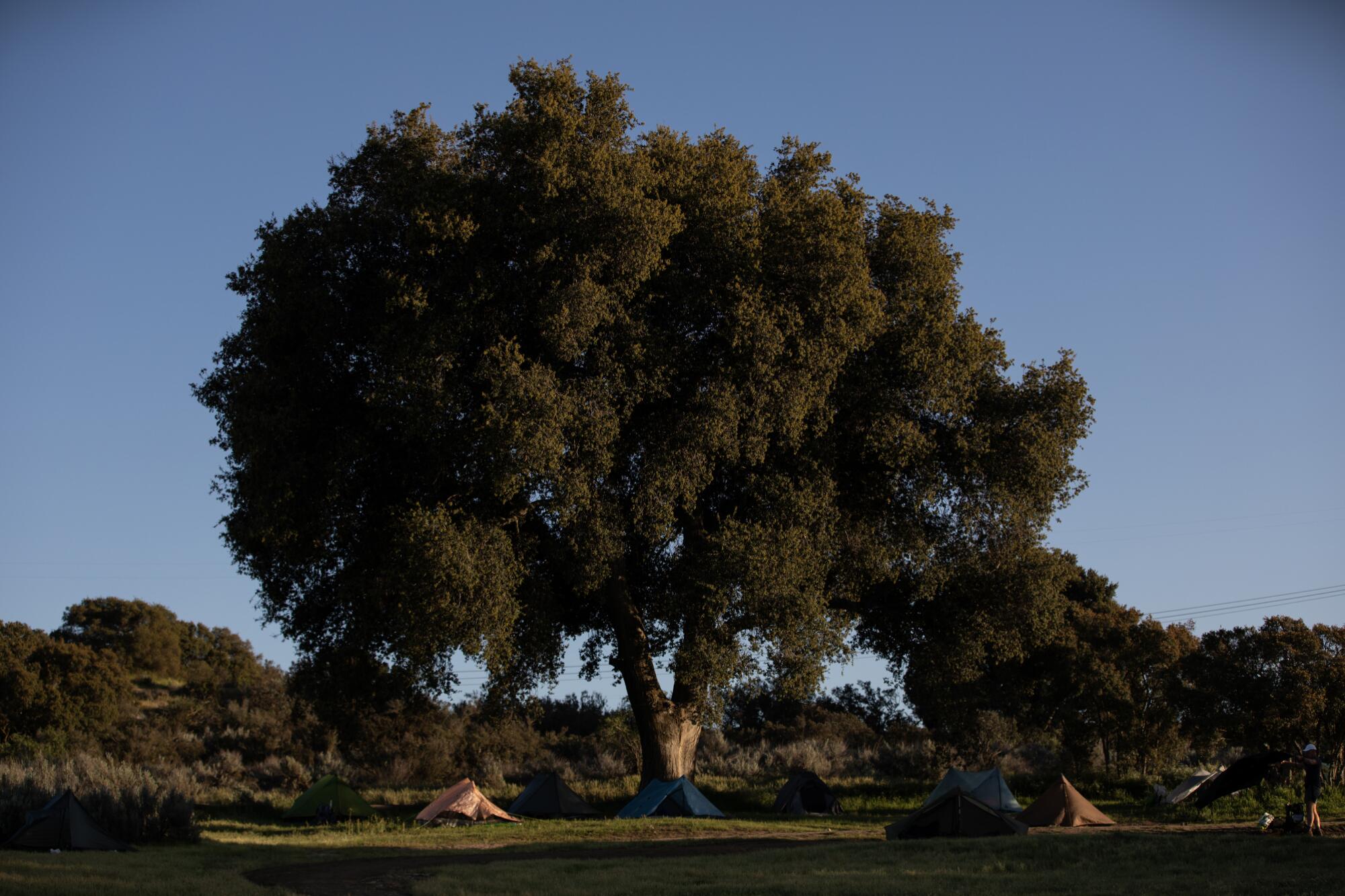
Hikers from all over the country and world are hoping to complete the Pacific Crest Trail, a 2,650-mile route stretching from the U.S. border with Mexico to Canada
A majestic oak tree offers cool shade to Mike Brown as he rests in his gray, two-person tent on a late Friday afternoon in April.
Brown, a 51-year-old from New Zealand, is about 15 hours away from starting the Pacific Crest Trail, the 2,650-mile route that travels from eastern San Diego County — where the U.S. meets the border with Mexico — to the Canadian border. He’s camping for the night at the Camp Lockett Event & Equestrian Facility, or CLEEF for short, in Campo, where, for the past four years, an official campground has operated for Pacific Crest Trail hikers before they start the trek.
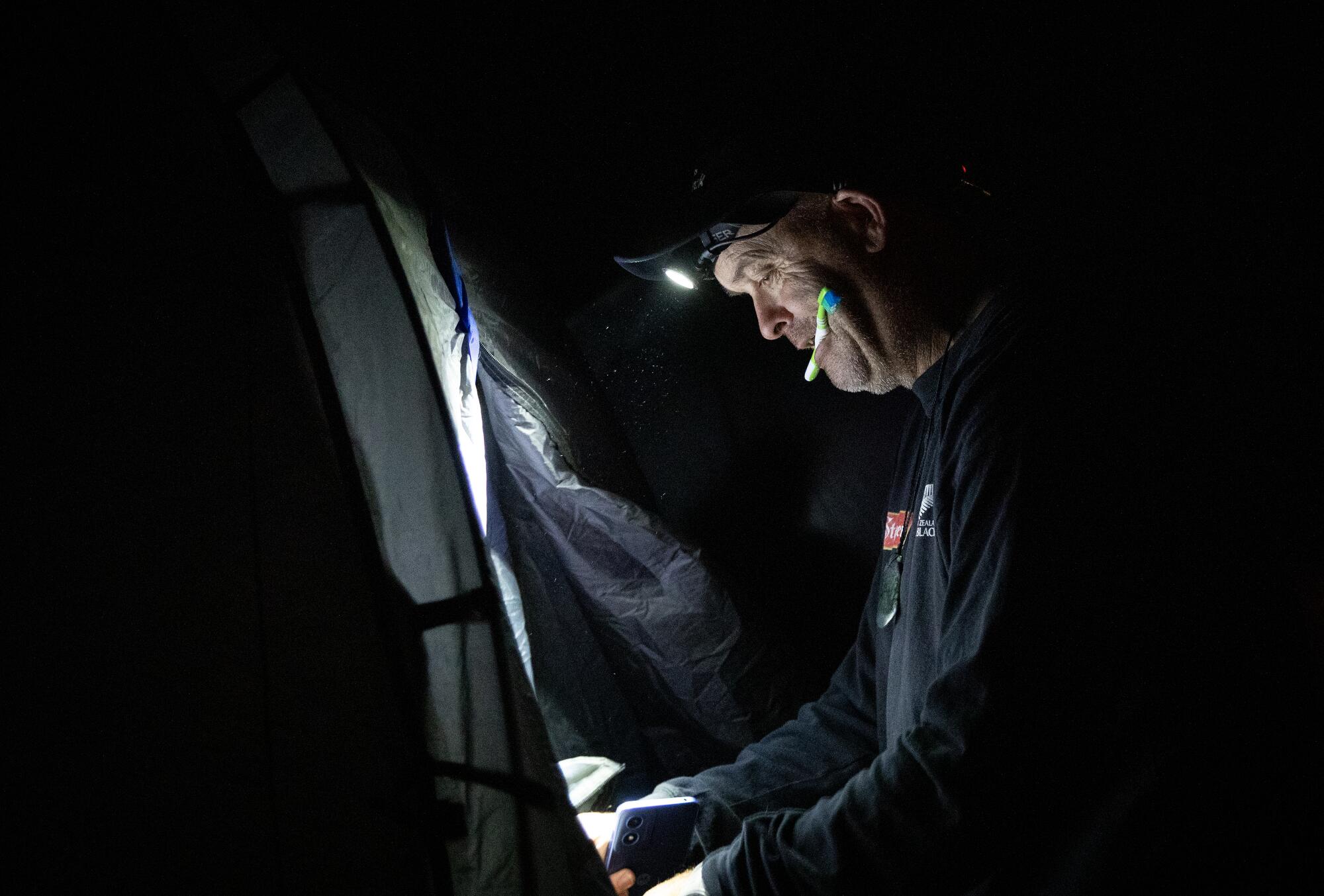
Around him, more than a dozen other hikers have set up their own tents. With birds chirping and the sun on the verge of making its daily western descent, the setting is peaceful, yet tinged with anticipation. Tomorrow, the hikers will set out for a roughly five-month journey that will test them mentally and physically. The feeling of the unknown — and the way the imagination can swirl with what could be — is electrifying.
“I’m excited now… just getting down here,” Brown says, sitting in the doorway of his tent. “Really chomping at the bit.”
Brown and his camp companions are among the thousands of hikers who come to San Diego County from all over the world to thru-hike the Pacific Crest Trail — commonly referred to as the PCT — each spring. The trail passes through nearly 133 miles of San Diego County, but it’s not only the hills and valleys that see the impact. Every year, a dedicated network of San Diegans, including those who run the CLEEF campground, offer support and resources to the hikers as they make their way north.
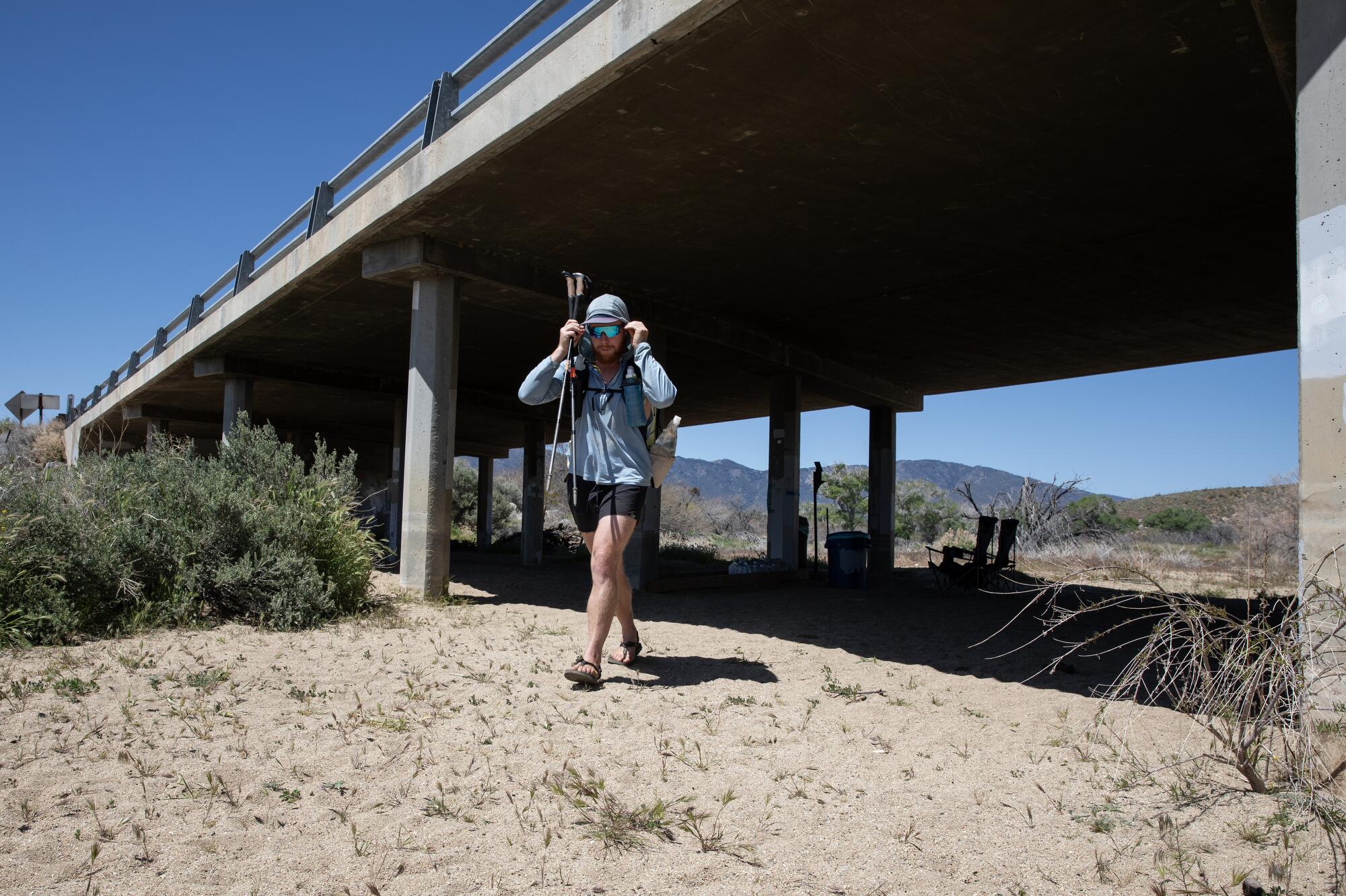
The PCT is one of the country’s most acclaimed long-distance trails. It’s often attempted as a thru-hike, which is a continuous long-distance backpacking trek, though the trail is also used by horseback riders and hikers doing shorter sections. It passes over more than 600 miles of Southern California before heading along the crest of the Sierra Nevada and the Cascade Range beyond it. All the while, hikers are walking 15 or more miles a day, witnessing spectacular views of meadows, rivers and mountain peaks, but also facing storms and the hot sun and packing out their used toilet paper.
The number of PCT users has significantly increased in the past 12 years. Its popularity has stemmed in large part from the 2012 publication of Cheryl Strayed’s memoir about her experience on the trek, “Wild,” which was later adapted into a film starring Reese Witherspoon. Before that, less than 200 people reported completing the PCT each year; now the average number is closer to 700.
While Strayed embarked on the PCT to grapple with a divorce, drug use and her mother’s death, the hikers today all have their own reasons.
One says she’s doing the hike for her dad, who always wanted to walk the PCT; another is hoping the solace of the journey will help her process past trauma; and a young couple who has been living and traveling in a van for four years say that “it seems like a fun adventure.”
Most hikers start in San Diego County from March through May, making it to the Canadian border in about five to six months. Along the way, they camp and stop in towns, such as Julian and Idyllwild, to resupply and rest, often at lodging for a night or two off the trail.
If anything is true, it’s that the PCT is a marathon, not a sprint.
“I’ve got months to do it. I’m not rushing,” Brown said earlier in the week from the hostel he was staying at in downtown San Diego before heading east. “I’ll set my own pace.”
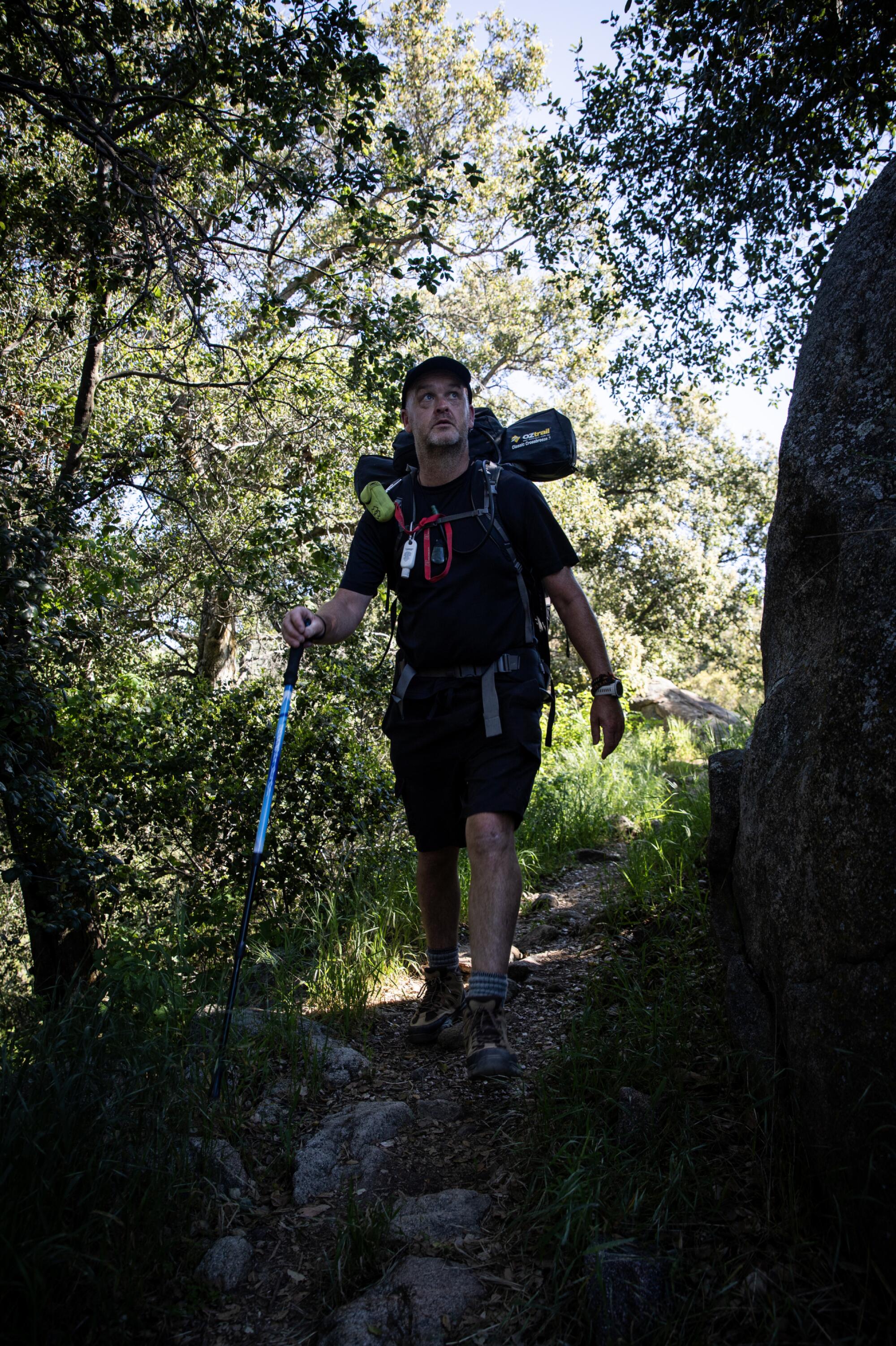
Brown is an experienced hiker; he’s hiked the nearly 2,000-mile Te Araroa, a route stretching across the length of New Zealand, and climbed Mount Kilimanjaro, the highest mountain in Africa at 19,340 feet.
The New Zealander keeps things simple, though. His gear isn’t name-brand and his trail food consists of instant noodles and granola bars. He points to one of his most valuable items, a spool of black electrical tape that he’ll use for blisters, along with cheap hiking boots that he’ll replace in a few months.
He wears a beanie bearing the phrase “do today, not tomorrow,” something he began saying about 12 years ago after his divorce, and is starting the hike on April 20, his birthday. But Brown isn’t a sentimental person and he doesn’t have a bucket list (“I don’t believe death should be a motivation to do something”) and isn’t doing the PCT for any kind of self-discovery.
He didn’t even tell his family or friends that he’s here, though he will post updates on Facebook and Instagram. On Friday, April 19, he charges his phone using the campground’s outlets.
Hikers from around the world come each spring to walk the Pacific Crest Trail. Here’s what San Diegans should know about the trail that passes through their backcountry.
The campground, costing $12 a night per hiker, has nearly every amenity they may need before the journey: clean bathrooms, Wi-Fi and a charging station, plus a gazebo with picnic tables, couches and several heaters. It’s cozy with gentle indie music playing in the background in the evening and following morning.
It’s also a welcome experience for the hikers, especially those who, like Brown, have traveled from far-flung places to get to the PCT’s southern terminus, the trail’s southernmost point located less than half a mile from the campground and directly next to the border fence.
The PCT can connect people who would have never met otherwise, explains Dee Milosch, who runs the CLEEF campground with her husband, Paul. Despite their differences, many of the hikers at camp share similar sentiments, such as how their loved ones think they’re crazy for doing this, or how they want an escape from their stressful lives.
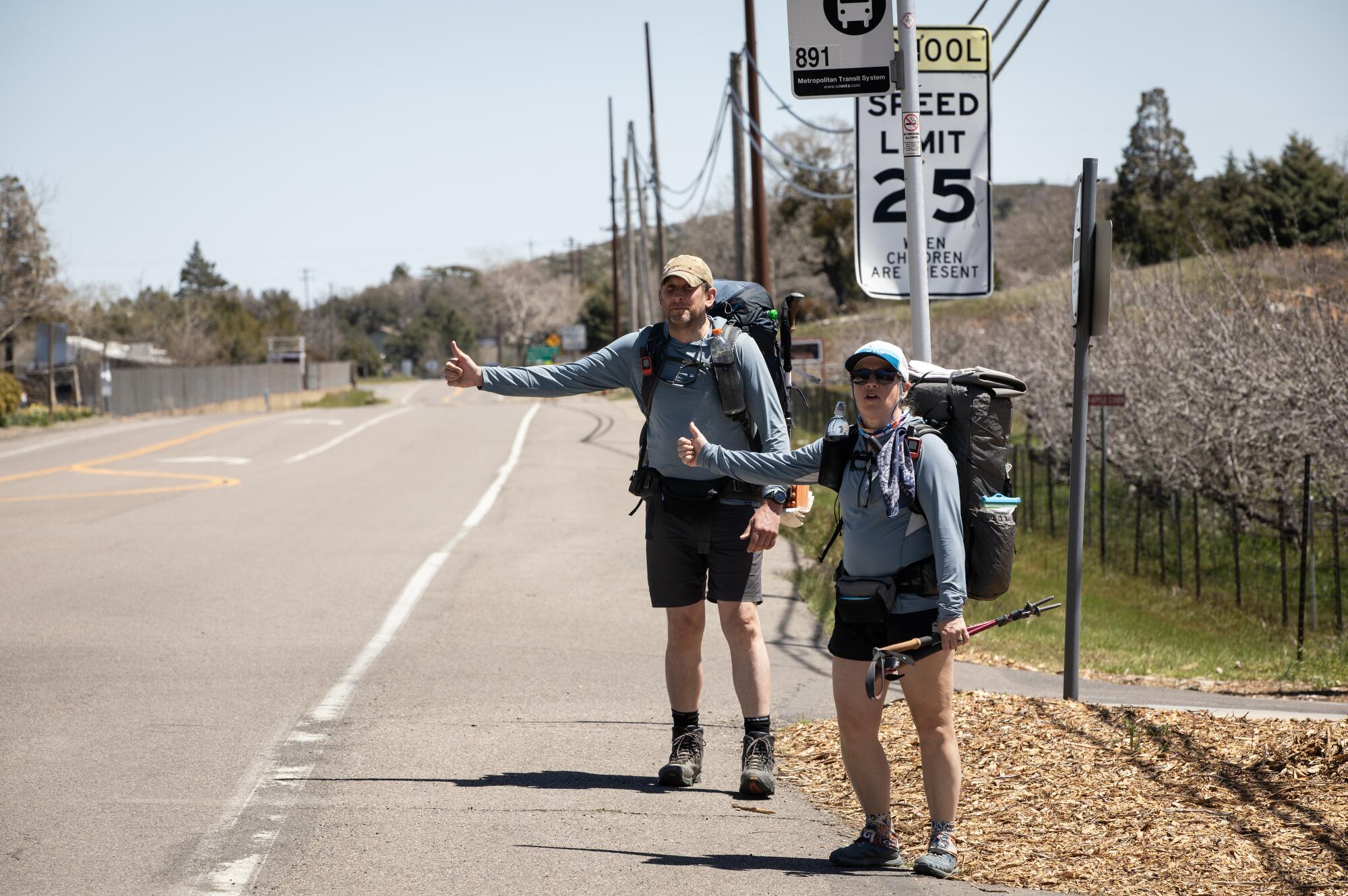
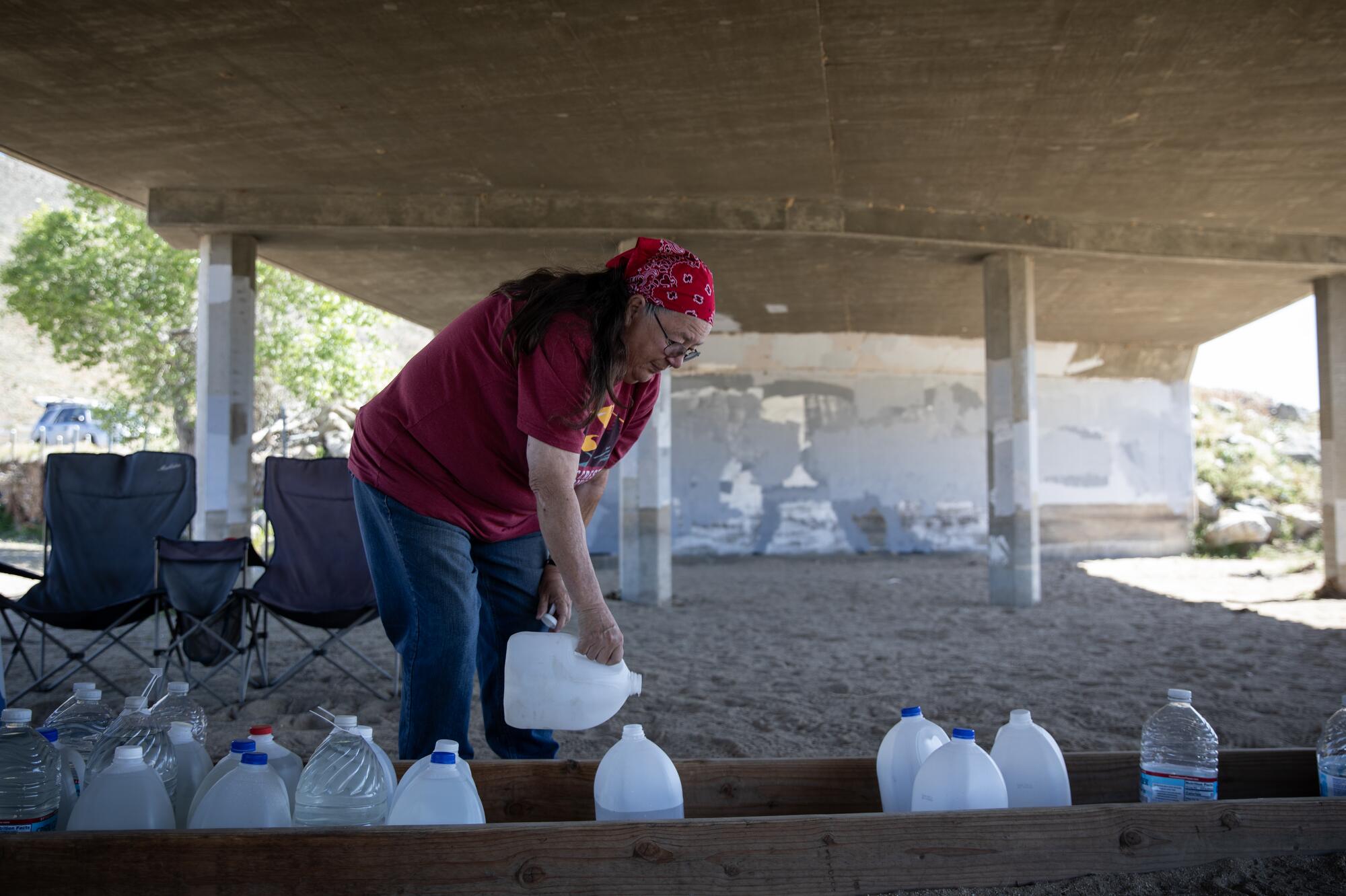
“A lot of people are worried, like, ‘I’m doing this adventure on my own,’ but you’re not,” Milosch said. “You’re entering into a community of like-minded individuals trying to do this amazing feat.”
Many hikers are given a trail name by their trail companions, often something that encapsulates their personality or a memory from the hike. Milosch’s trail name, which her husband gave her when they did the PCT in 2014, is OneSpeed, born from her consistent pace on the trail.
Hikers staying at the camp hail from Texas, Wisconsin, Illinois, Washington, Canada, New Zealand and Sweden. Along with adapting to a new name, the hikers will also need to adapt to the trail conditions of the western U.S.
“In New Zealand, I’ve never had to purify water... so I’m going to have to get used to not being able to drink straight out of the water in America,” Brown says, holding a filter that will clean viruses and bacteria from river and stream water. “So that’s going to be interesting.”
What it takes to hike the PCT
At 2,650 miles, the PCT is the second longest thru-hike in the U.S., behind the 3,100-mile Continental Divide Trail.
Thru-hiking is a different beast from day hiking or regular backpacking. Hikers must consider where they’ll refill their supplies and have a plan in case important gear, such as a tent or stove, malfunctions. But they also have to contend with temperamental weather, being alone in scary circumstances and the mere experience of smelling bad after days without a shower.
“Day one, I was definitely crying a lot and thinking, ‘Why am I doing this?’” said 36-year-old Hannah Williams, a comedian living in Los Angeles who started the hike in late March.
It was hailing, sleeting and windy all before she hit mile one, she recalls on the phone from Idyllwild, located 179 miles from the start.
The Milosches, along with the help of Don Gentine, who goes by the trail name Papa Bear, hope to provide hikers at the campground with essential insight about the trek. They are retired California State Parks rangers and have been managing the campground since 2023.
Every evening there, the hosts give a safety talk, including advice on how to avoid dehydration, hypothermia and altitude sickness, as well as tips for hitchhiking and river crossings, where, such as in the Sierra Nevada, water can move quickly and threaten to pull hikers downstream. In each talk, Dee Milosch (the self-proclaimed “doom and gloom person”) asks the hikers, “What’s the number one rule of thru-hiking?” The answer: don’t die.
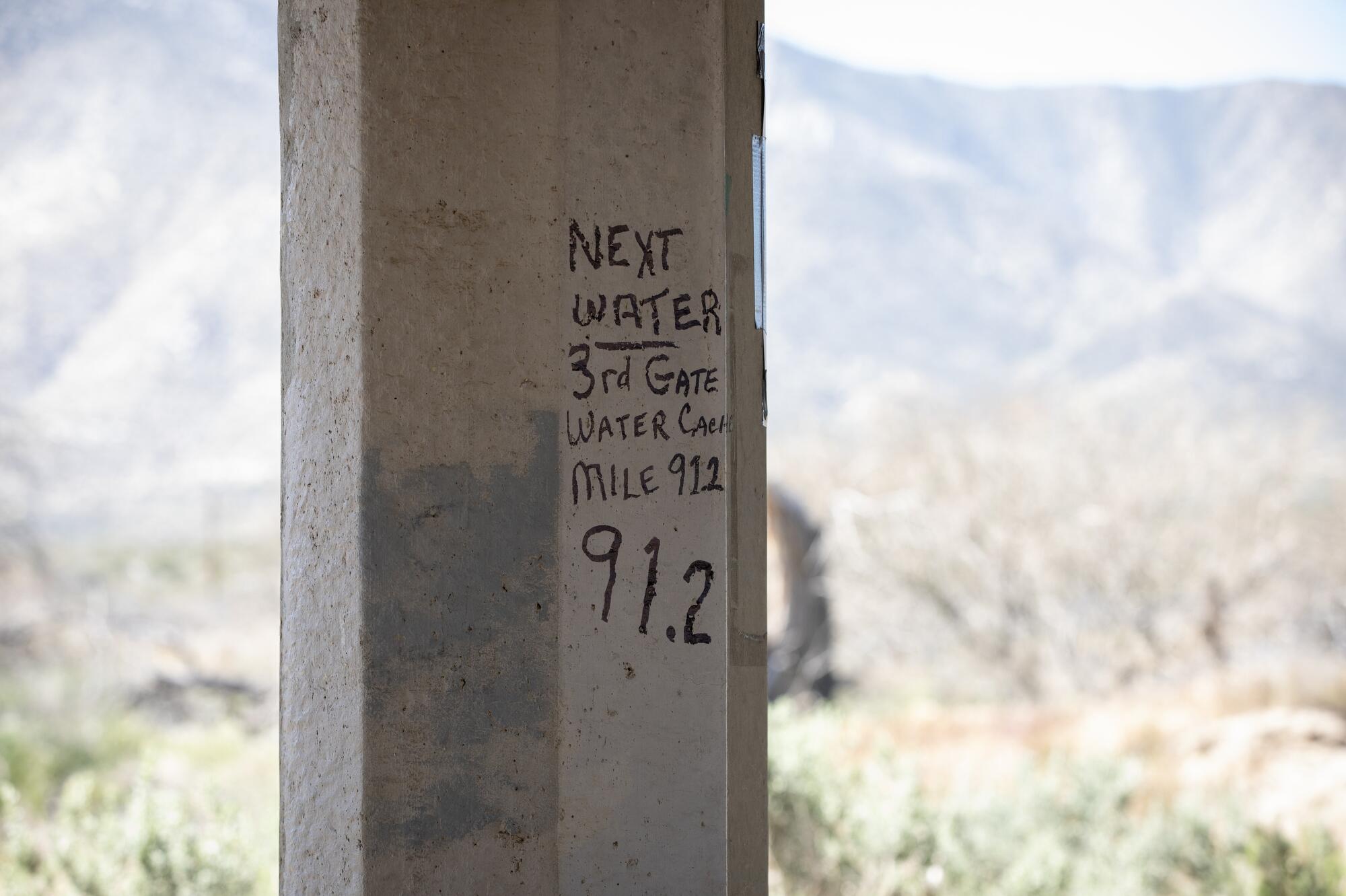
Dee and Paul also provide a shuttle for hikers from Old Town in San Diego to CLEEF, with stops along the way to pick up supplies.
The campground has been growing over the years, largely thanks to the Camp Lockett Master Plan and Rezone, a 2019 county initiative to develop the area, which includes plans to improve amenities for PCT hikers, such as adding barracks, kitchens and restrooms.
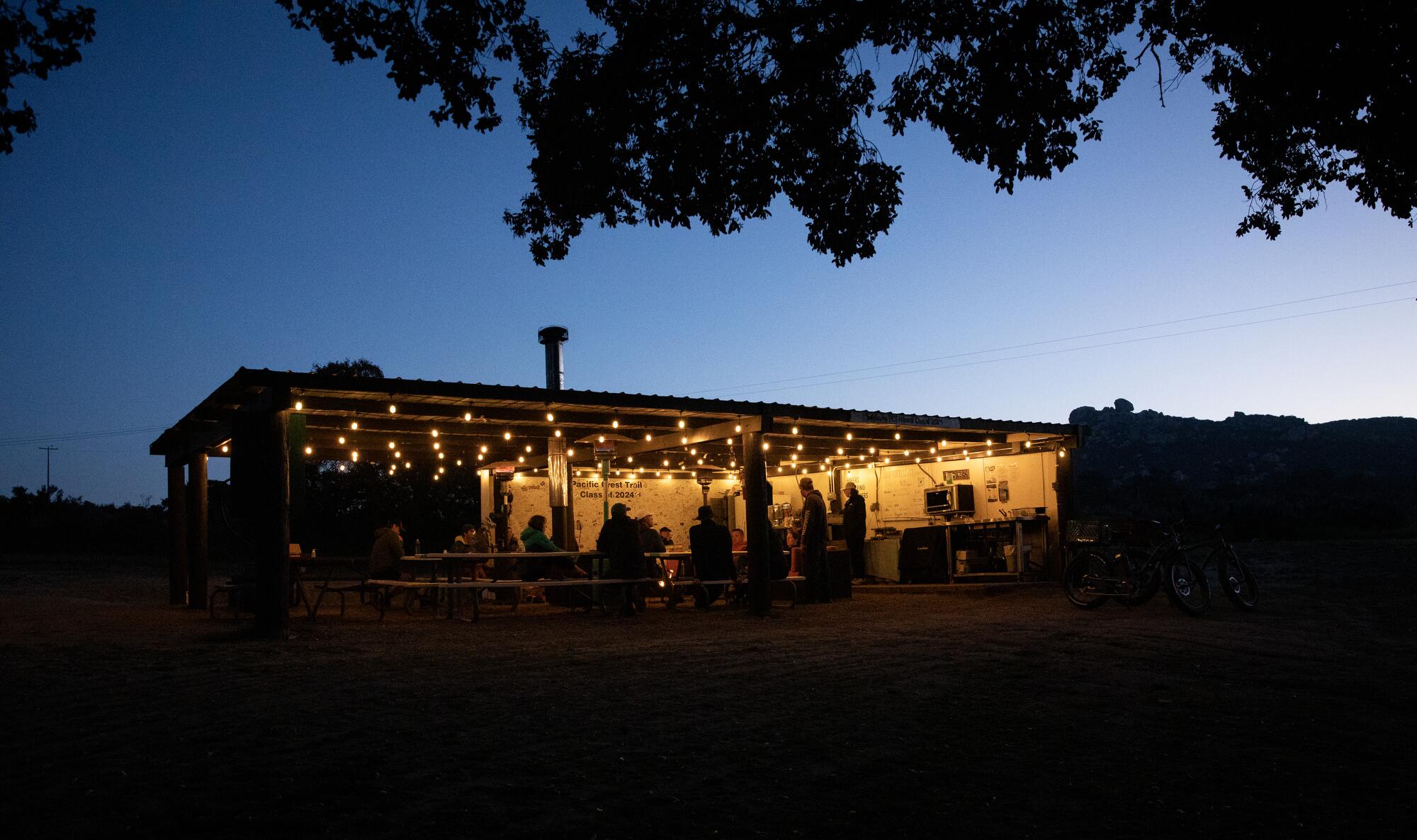
In preparation for this year, the team added electricity and expanded the gazebo. Next, they’re hoping to build a new restroom and make it easier for hikers to ship gear and store it at the campground.
San Diegans support PCT hikers in other ways, too. Along the trail, helpers known as “trail angels” provide a range of resources to hikers, including bringing them food and water on the trail and offering rides.
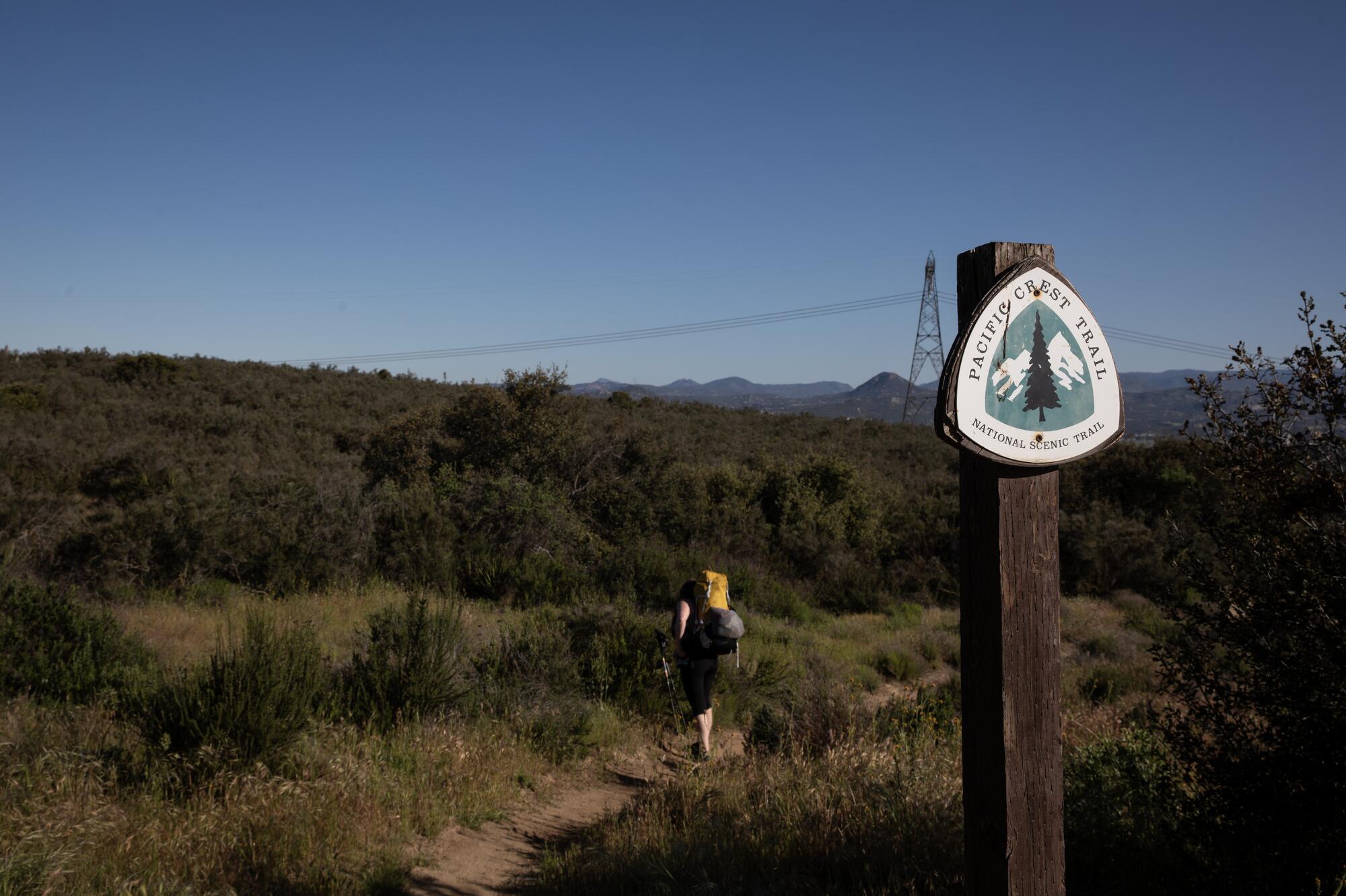
There are elements to hiking the PCT that locals can’t help hikers with, though, such as the logistics of being away from home for half the year. Most hikers quit their job or have to take time off and will typically spend between $8,000 to upward of $12,000 on a thru-hike.
“I don’t have any doubt in my intention (to complete the hike) right now and in my physical ability,” said 53-year-old Julianne Smith from Austin, Texas, who goes by the trail name of Gypsy. “What I do worry about is my budget; if I run out of money then it’s game over.”

Smith’s desire to hike the PCT stems from a spiritual experience she had a few years ago during ketamine-assisted psychotherapy. After the treatment, she felt more courage to do the things she wants, regardless of what her family or friends think.
Some of her gear is slightly unconventional — “I’m so proud of my ultra-light titanium bong,” she says , beaming — and she wears a colorful skirt she bought on Etsy over her hiking leggings, a cover-up so she isn’t totally exposed when she squats to use the bathroom on the trail.
‘We’re into it now’: PCT hikers take on the trail
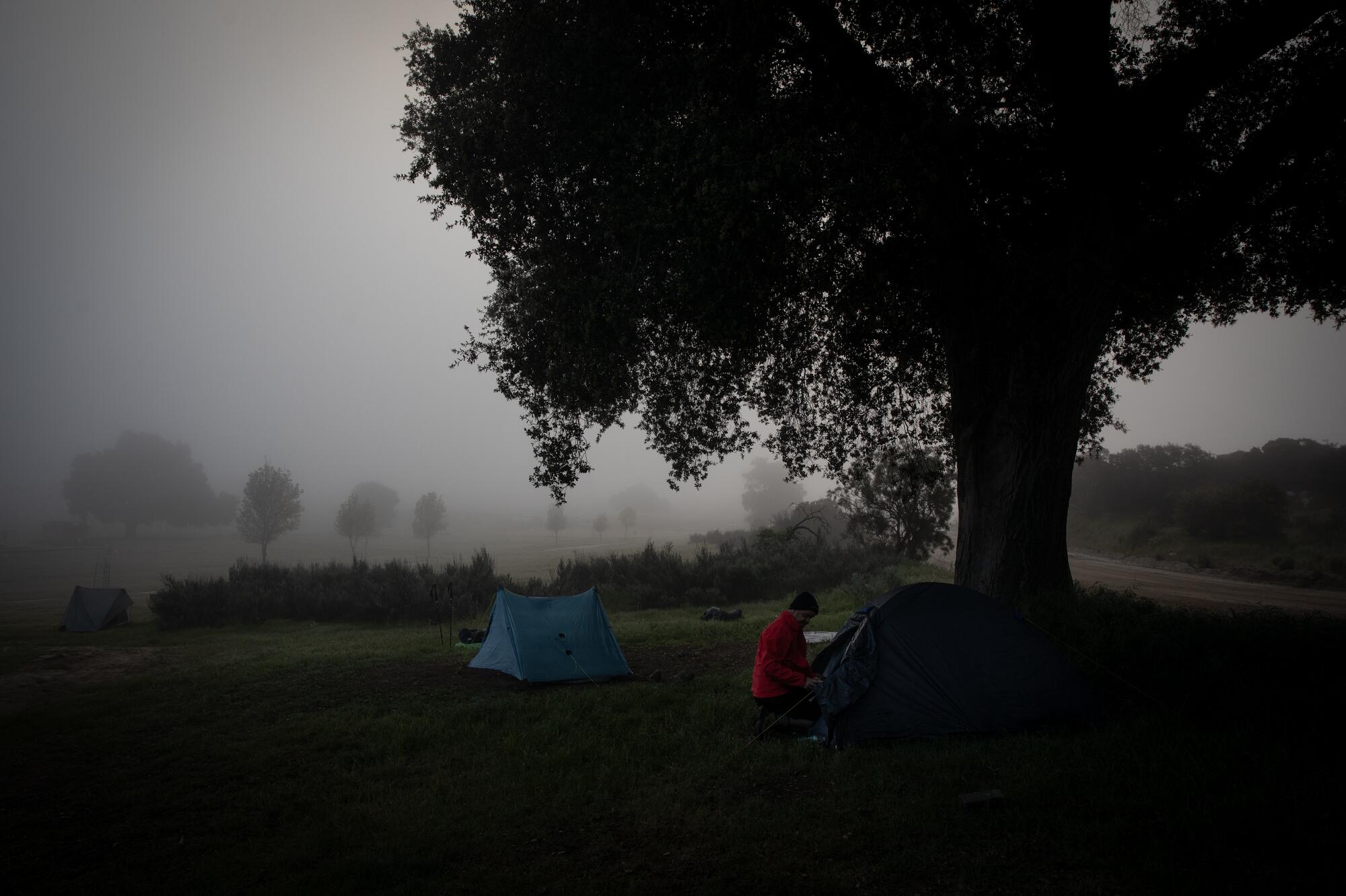
The next morning, hikers start to stir in the dark around 5:30 a.m.
It can be hard to get a good night’s sleep on the ground, but most of the hikers look refreshed as they pour coffee and dig in to homemade pancakes, part of the camp’s breakfast served every day at 6 a.m. On this morning, Papa Bear added Reese’s peanut butter cup pieces to the batter.
By 8 a.m., most of the hikers set out for the southern terminus, where a stone monument marks the spot.
PCT Association Crest Runners, who check hiker permits and provide hikers with trail knowledge along the first 100 miles, help snap a few photos at the trailhead. Then, without much pomp and circumstance, the hikers start walking.
The trail, lined with yucca, mountain lilac and lemonade berry, is well maintained. In the first half mile, Brown — officially a year older, now 52 — sees a cactus for the first time and keeps his eyes peeled for any geocaching opportunities.
Fellow hikers from the camp pass by, waving.
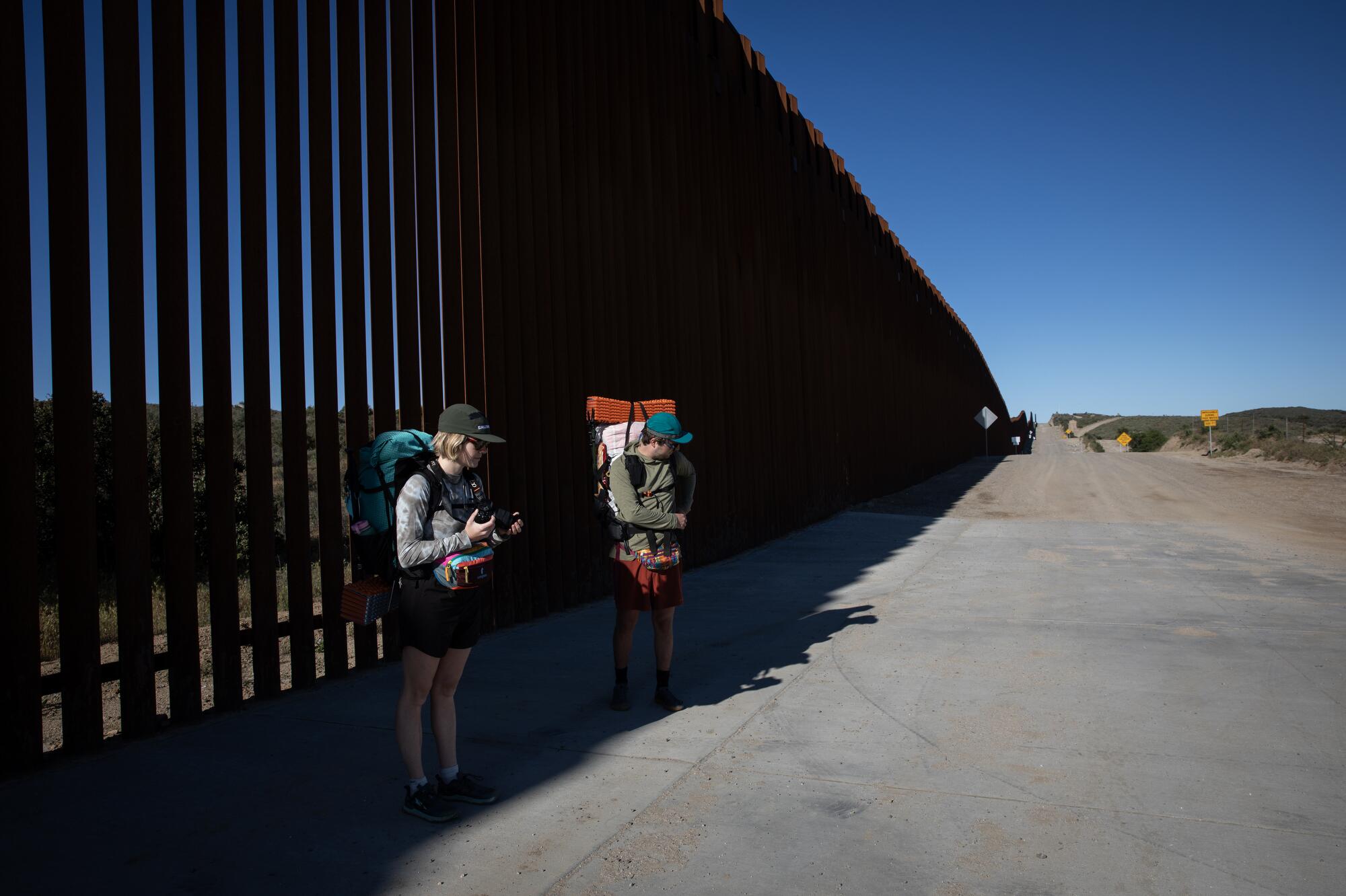
Everyone is chipper, and it’s hard to imagine that this attitude will last for the next five or six months, after the hikers experience the challenges of trail life. But then again, maybe it will. Maybe every day on the PCT, with new vistas and memories made, feels like the first.
“At the end of each day, my feet are killing me, I’m tired and hungry and thirsty,” Williams said. “But I laugh a lot with my trail family and (when) I wake up, my body has this very incredible way of forgetting everything that happened.”
Six days after leaving CLEEF and 77 miles in, Brown makes it to Julian, where he and some other hikers are staying for the night in an Airbnb. In his first week, he’s seen three snakes and shed three pounds from his backpack: a heavy first aid kit and some thermal clothing he doesn’t need.
He’s still got 2,573 miles until he reaches Canada, but it sounds like the journey so far isn’t half bad.
“Coming up over the top of Mt. Laguna and looking over the desert was pretty cool,” he said on the phone from Julian. “You could see the (snow-capped) mountains ahead, and I was like, ‘Ah yeah, that’s where we’re headed.’ We’re into it now.”
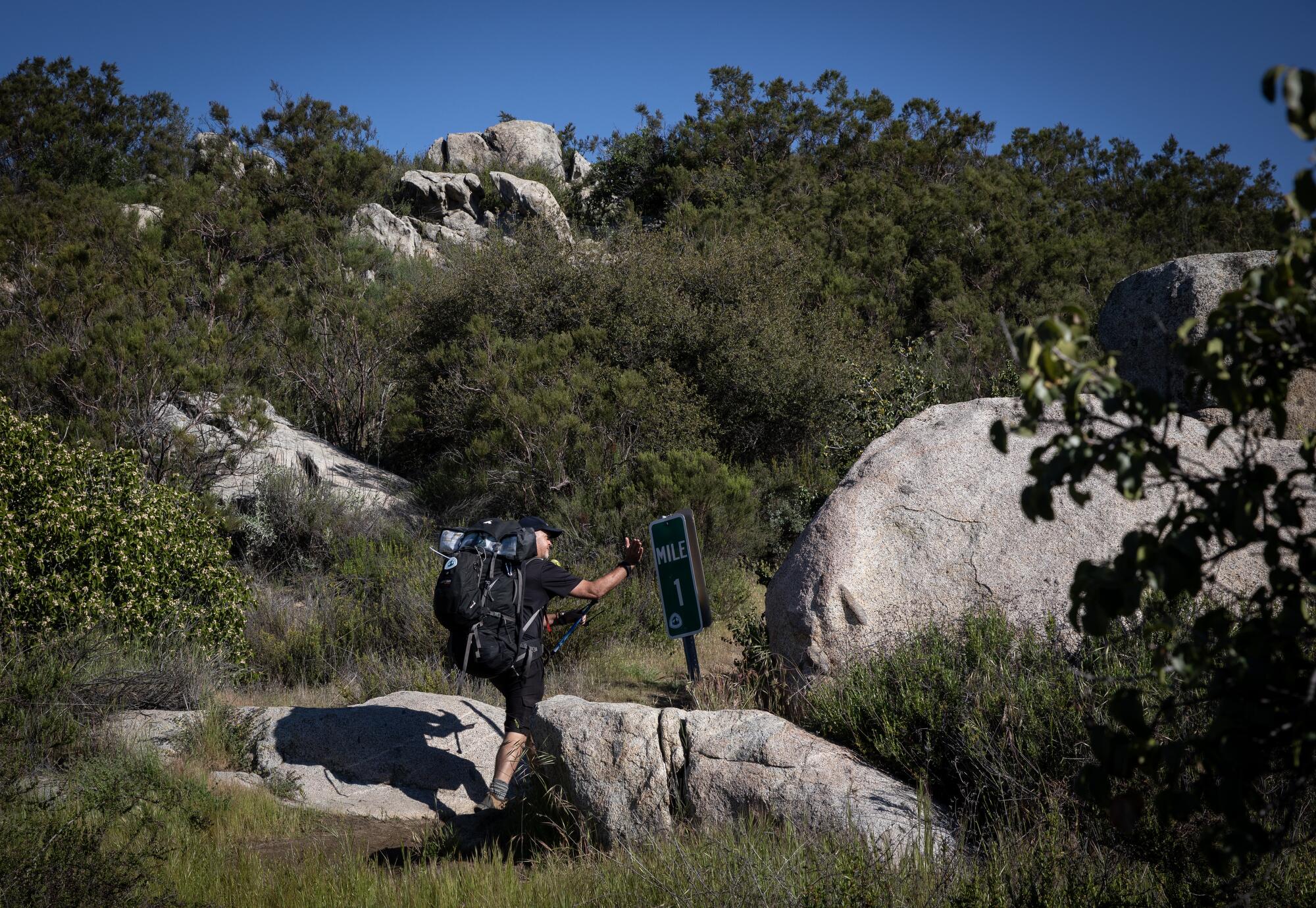
Get Essential San Diego, weekday mornings
Get top headlines from the Union-Tribune in your inbox weekday mornings, including top news, local, sports, business, entertainment and opinion.
You may occasionally receive promotional content from the San Diego Union-Tribune.

